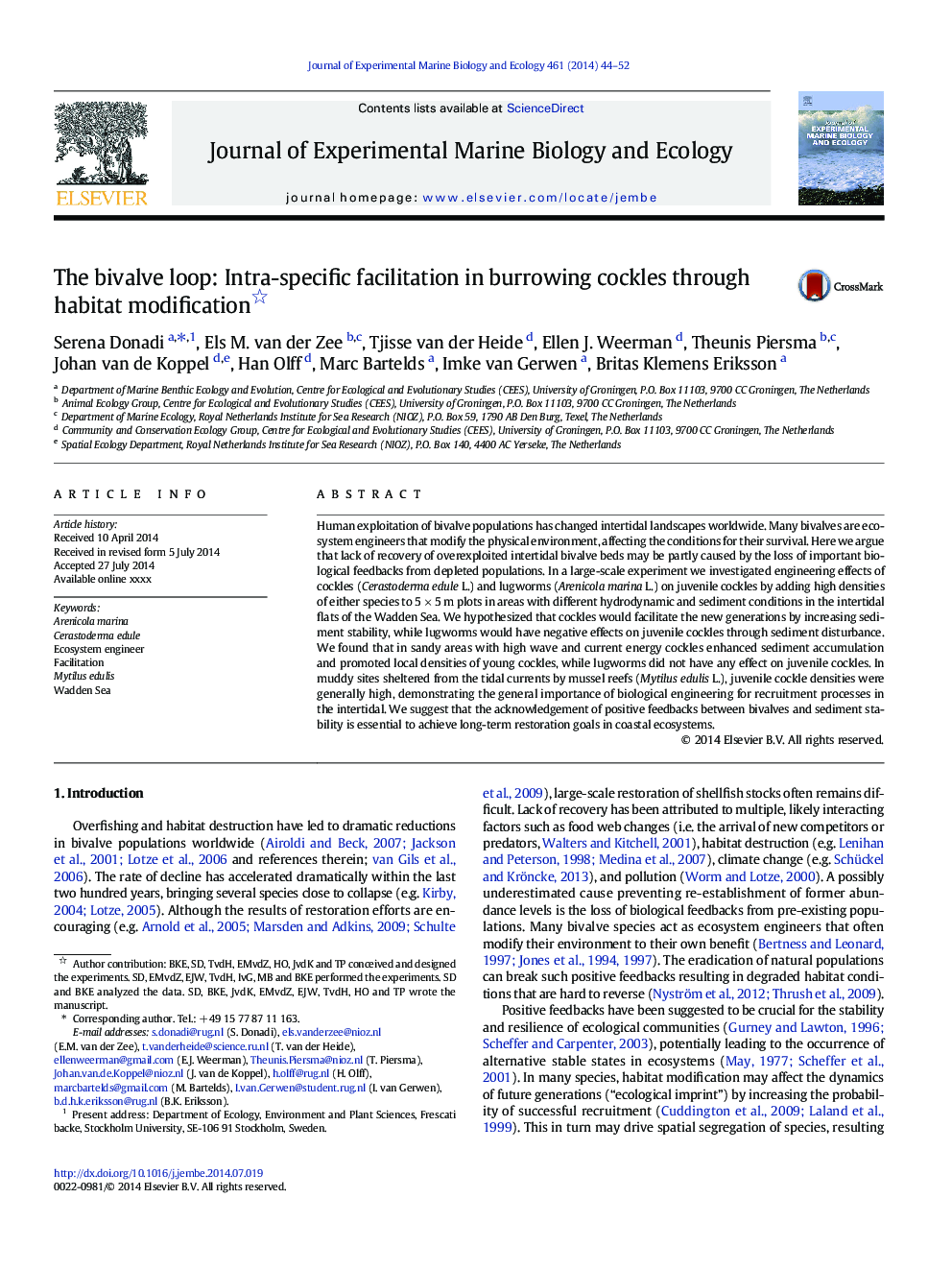| Article ID | Journal | Published Year | Pages | File Type |
|---|---|---|---|---|
| 6303906 | Journal of Experimental Marine Biology and Ecology | 2014 | 9 Pages |
Abstract
Human exploitation of bivalve populations has changed intertidal landscapes worldwide. Many bivalves are ecosystem engineers that modify the physical environment, affecting the conditions for their survival. Here we argue that lack of recovery of overexploited intertidal bivalve beds may be partly caused by the loss of important biological feedbacks from depleted populations. In a large-scale experiment we investigated engineering effects of cockles (Cerastoderma edule L.) and lugworms (Arenicola marina L.) on juvenile cockles by adding high densities of either species to 5Â ÃÂ 5Â m plots in areas with different hydrodynamic and sediment conditions in the intertidal flats of the Wadden Sea. We hypothesized that cockles would facilitate the new generations by increasing sediment stability, while lugworms would have negative effects on juvenile cockles through sediment disturbance. We found that in sandy areas with high wave and current energy cockles enhanced sediment accumulation and promoted local densities of young cockles, while lugworms did not have any effect on juvenile cockles. In muddy sites sheltered from the tidal currents by mussel reefs (Mytilus edulis L.), juvenile cockle densities were generally high, demonstrating the general importance of biological engineering for recruitment processes in the intertidal. We suggest that the acknowledgement of positive feedbacks between bivalves and sediment stability is essential to achieve long-term restoration goals in coastal ecosystems.
Related Topics
Life Sciences
Agricultural and Biological Sciences
Aquatic Science
Authors
Serena Donadi, Els M. van der Zee, Tjisse van der Heide, Ellen J. Weerman, Theunis Piersma, Johan van de Koppel, Han Olff, Marc Bartelds, Imke van Gerwen, Britas Klemens Eriksson,
